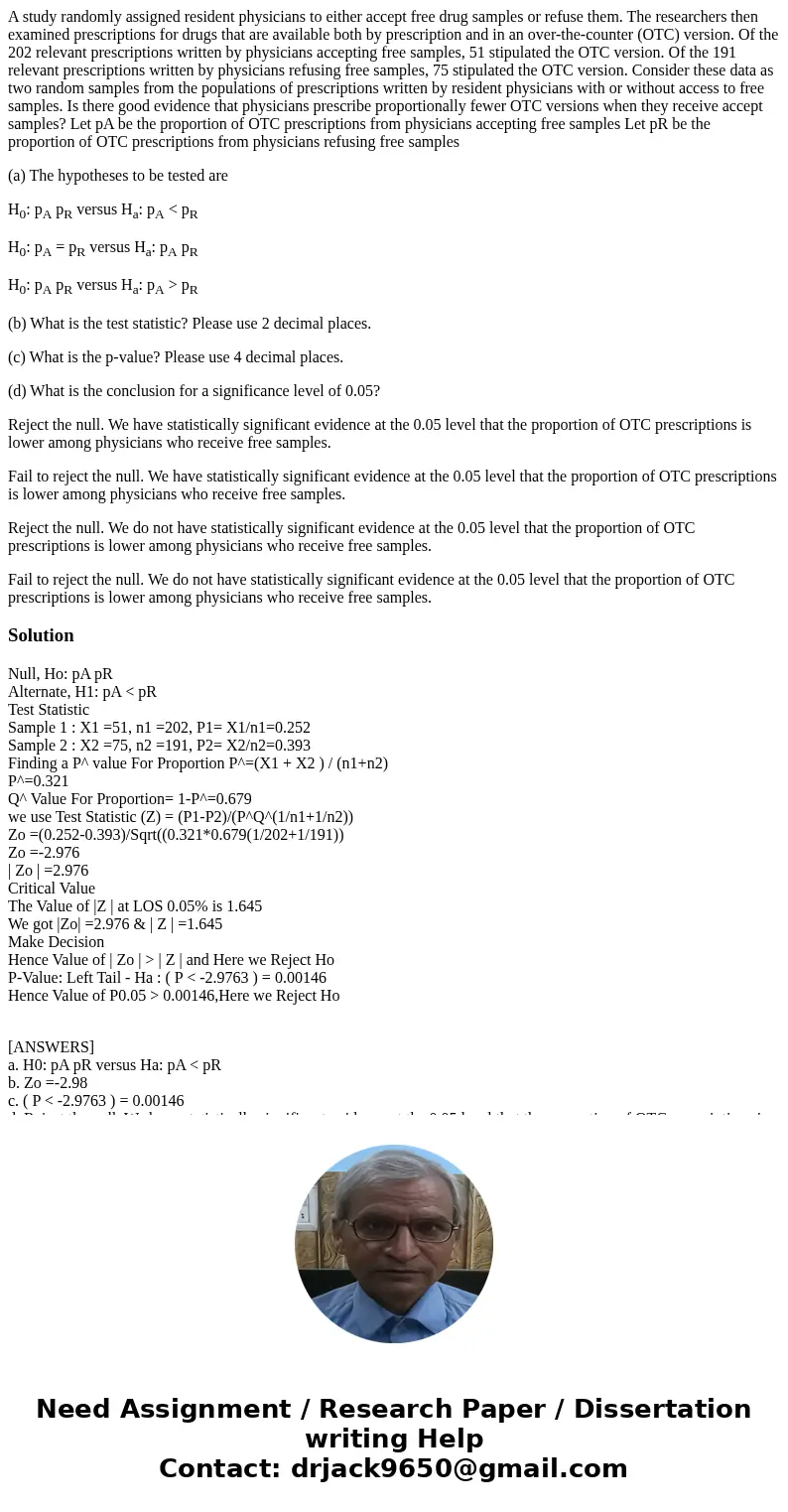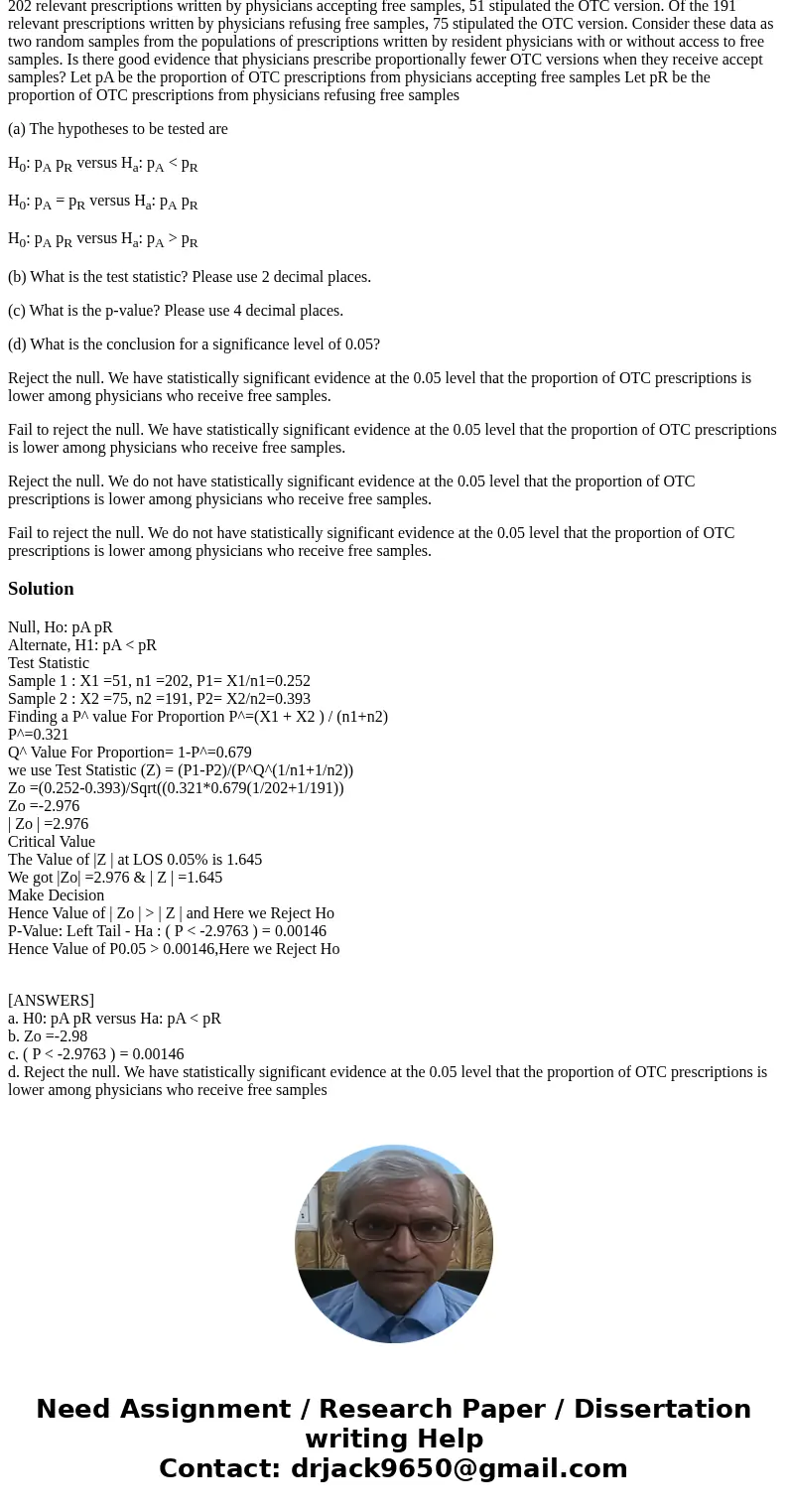A study randomly assigned resident physicians to either acce
A study randomly assigned resident physicians to either accept free drug samples or refuse them. The researchers then examined prescriptions for drugs that are available both by prescription and in an over-the-counter (OTC) version. Of the 202 relevant prescriptions written by physicians accepting free samples, 51 stipulated the OTC version. Of the 191 relevant prescriptions written by physicians refusing free samples, 75 stipulated the OTC version. Consider these data as two random samples from the populations of prescriptions written by resident physicians with or without access to free samples. Is there good evidence that physicians prescribe proportionally fewer OTC versions when they receive accept samples? Let pA be the proportion of OTC prescriptions from physicians accepting free samples Let pR be the proportion of OTC prescriptions from physicians refusing free samples
(a) The hypotheses to be tested are
H0: pA pR versus Ha: pA < pR
H0: pA = pR versus Ha: pA pR
H0: pA pR versus Ha: pA > pR
(b) What is the test statistic? Please use 2 decimal places.
(c) What is the p-value? Please use 4 decimal places.
(d) What is the conclusion for a significance level of 0.05?
Reject the null. We have statistically significant evidence at the 0.05 level that the proportion of OTC prescriptions is lower among physicians who receive free samples.
Fail to reject the null. We have statistically significant evidence at the 0.05 level that the proportion of OTC prescriptions is lower among physicians who receive free samples.
Reject the null. We do not have statistically significant evidence at the 0.05 level that the proportion of OTC prescriptions is lower among physicians who receive free samples.
Fail to reject the null. We do not have statistically significant evidence at the 0.05 level that the proportion of OTC prescriptions is lower among physicians who receive free samples.
Solution
Null, Ho: pA pR
Alternate, H1: pA < pR
Test Statistic
Sample 1 : X1 =51, n1 =202, P1= X1/n1=0.252
Sample 2 : X2 =75, n2 =191, P2= X2/n2=0.393
Finding a P^ value For Proportion P^=(X1 + X2 ) / (n1+n2)
P^=0.321
Q^ Value For Proportion= 1-P^=0.679
we use Test Statistic (Z) = (P1-P2)/(P^Q^(1/n1+1/n2))
Zo =(0.252-0.393)/Sqrt((0.321*0.679(1/202+1/191))
Zo =-2.976
| Zo | =2.976
Critical Value
The Value of |Z | at LOS 0.05% is 1.645
We got |Zo| =2.976 & | Z | =1.645
Make Decision
Hence Value of | Zo | > | Z | and Here we Reject Ho
P-Value: Left Tail - Ha : ( P < -2.9763 ) = 0.00146
Hence Value of P0.05 > 0.00146,Here we Reject Ho
[ANSWERS]
a. H0: pA pR versus Ha: pA < pR
b. Zo =-2.98
c. ( P < -2.9763 ) = 0.00146
d. Reject the null. We have statistically significant evidence at the 0.05 level that the proportion of OTC prescriptions is lower among physicians who receive free samples


 Homework Sourse
Homework Sourse